Things I got to learn travelling Telangana on cycle
When a state undergoes division in India, it often heralds a shift in resource allocation, favoring the newly formed state over its parent counterpart. This redistribution of resources typically results in the enhanced development of the newly created state, as it redirects previously allocated funds towards its own welfare and infrastructure. Reflecting on my travels to Chhattisgarh and Jharkhand, I’ve witnessed these states either surpassing or rapidly approaching the level of development of their parent states.
However, the case of Telangana presents a stark contrast. Despite its separation from Andhra Pradesh, Telangana remains significantly behind in terms of development. Historically, the region governed by the Nizam was left underdeveloped under the Andhra Pradesh regime, making it exceedingly challenging for Telangana to catch up in terms of equitable development.
The linguistic landscape of Telangana, heavily influenced by Urdu, stands out as a prominent differentiator, alongside intricate political dynamics that have both facilitated and hindered the state’s progress post-separation from Andhra Pradesh.
Despite its status as one of the least literate states in the country, falling below states like Uttar Pradesh and Jharkhand, and just above Bihar and Rajasthan, Telangana’s development trajectory diverges from conventional expectations. During my travels across the region, I’ve found Telangana to be surprisingly more developed than many northern states with higher literacy rates. Engaging in conversations in English, even in rural areas, was a notable departure from the norm in the north.
My journey across Telangana, undertaken on a bicycle, provided ample opportunity to observe and analyze the cultural, political, and psychological landscape of its residents. While I’ve endeavored to minimize bias in my observations, I acknowledge that inherent biases may have influenced my perspectives, shaped by my personal experiences and mode of travel.
As I share my insights in this article, I welcome constructive feedback and corrections to ensure accuracy and completeness in my portrayal of Telangana’s socio-political landscape.

Geography
The Telugu-speaking region in the south of India is intricately divided into three distinct parts: coastal Andhra, Rayalaseema, and Telangana. Among these, Telangana stands out as a newly formed state, having attained separate statehood in 2014, and is characterized by its unique cultural identity, setting it apart from its parent state, Andhra Pradesh.
The division of the region resulted in the formation of 31 districts, a significant increase from the 10 districts that existed during the Andhra Pradesh regime. Notably, nine of these districts were predominantly under the rule of the Nizam for over two centuries, spanning from the 17th to the 19th century. This historical backdrop underlines one of the fundamental differences between Telangana and Andhra Pradesh, as the latter was under British rule during this period.
The legacy of Nizam rule in Telangana, extending to five districts in Maharashtra and three in Karnataka, has left a complex imprint on the cultural fabric of the region. While residents were subject to taxation for developmental purposes, they were often kept uneducated to mitigate resistance against Nizam authority. This historical phenomenon has contributed to Telangana’s comparatively lower literacy rates in contemporary times.
Additionally, the cultural divergence between Telangana and Andhra Pradesh is palpable, with Telangana residents attributing a sense of refinement and respectability to their counterparts in Andhra Pradesh. This perception extends to attire and demeanor, with those influenced by Urdu language and culture in Telangana expressing a belief in the perceived sophistication of Andhra Pradesh residents.
Culture
Upon entering the southern region from the north, one immediately encounters striking cultural differences. Telangana, in particular, stands out from its northern counterparts, which can often be grouped together culturally. A notable aspect of Telangana’s culture is its rich artistic heritage, prominently showcased through rock carvings scattered across the state. Everywhere one goes, intricate sculptures of deities adorn the landscape, reflecting the region’s deep-seated interest in artistry.
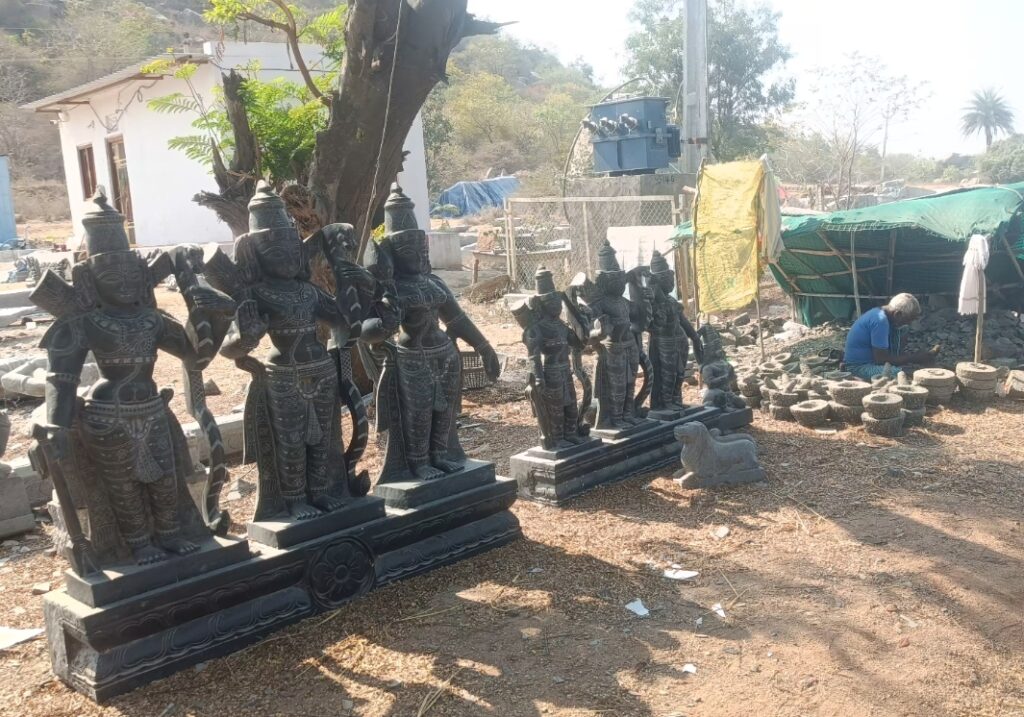
Moreover, Telangana boasts a wealth of architectural wonders, with temples dating back to the 6th to 14th centuries AD. Notable examples include the Alampur Navabhrama temple and the Ramappa temple, built by the Badami Chalukyas and the Kakatiya Dynasty, respectively. These temples serve as enduring testaments to the architectural prowess of the region, surpassing the sheer number and beauty of temples found in the north.

Interestingly, while temples in the north often rely on historical significance, those in Telangana, although more recently constructed, play a significant role in the region’s economy. The proliferation of temples in every village, each adorned with elaborately carved gopuras (entrance gates with divine motifs), underscores the profound influence of religion on the cultural fabric of Telangana.
In addition to the rich architectural and artistic heritage, I observed another intriguing cultural facet in Telangana: the ubiquitous presence of demon-faced masks adorning houses and buildings. These masks serve a symbolic purpose, believed to ward off the evil eye and protect homes and shops from malevolent influences.
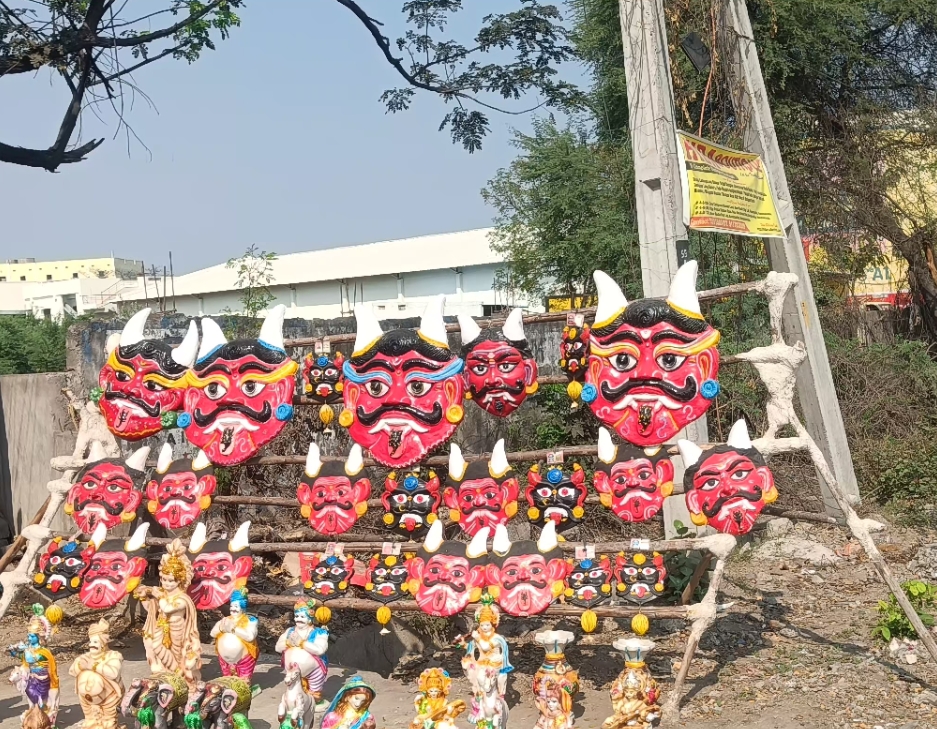
Furthermore, Telangana’s culinary landscape reflects a deep-rooted love for food, with its residents earning a reputation as discerning food enthusiasts. This culinary passion is evident in the robust and healthy physique of Telangana’s populace compared to their leaner counterparts in neighboring states. The local diet predominantly revolves around meat and rice, with a particular emphasis on the beloved biryani, known for its aromatic flavors and spicy kick. The cuisine of Telangana is renowned for its fiery spice levels, making it a paradise for lovers of intense flavors. However, the prevalence of meat consumption in the region can pose challenges for vegetarians seeking sustenance.
Beyond gastronomy, there is a notable affinity for alcohol among locals in Telangana. This penchant for alcoholic beverages is widespread, with public spaces often doubling as informal picnic spots for communal drinking sessions. This cultural inclination towards socializing over drinks adds yet another dimension to the vibrant tapestry of Telangana’s cultural landscape.
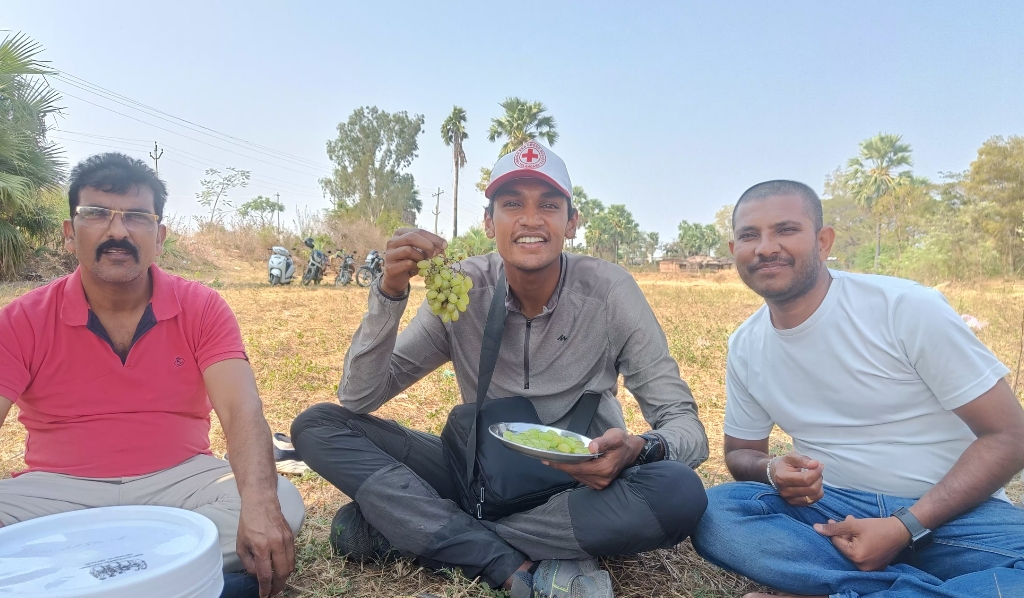
Additionally, Telangana emerged as a state where cinematic influence reigns supreme, surpassing any other state I encountered on my journey. Approximately one in every four individuals can be described as fervent movie enthusiasts, displaying a remarkable penchant for watching films. It struck me that residents of Telangana indulge in movie-watching activities with unparalleled zeal, often surpassing viewing habits observed elsewhere in the country.
A noteworthy observation was the voracious appetite for movies among college students, who are known to watch multiple films daily. Remarkably, Telangana stands out as one of the few places where individuals may prioritize movie viewing over other forms of entertainment, including social media engagement.
Lifestyle
Despite being a developing state, Telangana presents a stark contrast to the prevalent scenes of poverty and reliance on bicycles for transportation often observed in the north, indicating a relatively affluent lifestyle among its residents. The advertising landscape of Telangana offers a revealing glimpse into the aspirations and desires of its populace, with billboards predominantly promoting luxury items such as gold jewelry and high-end clothing, reflective of a strong demand for status symbols.
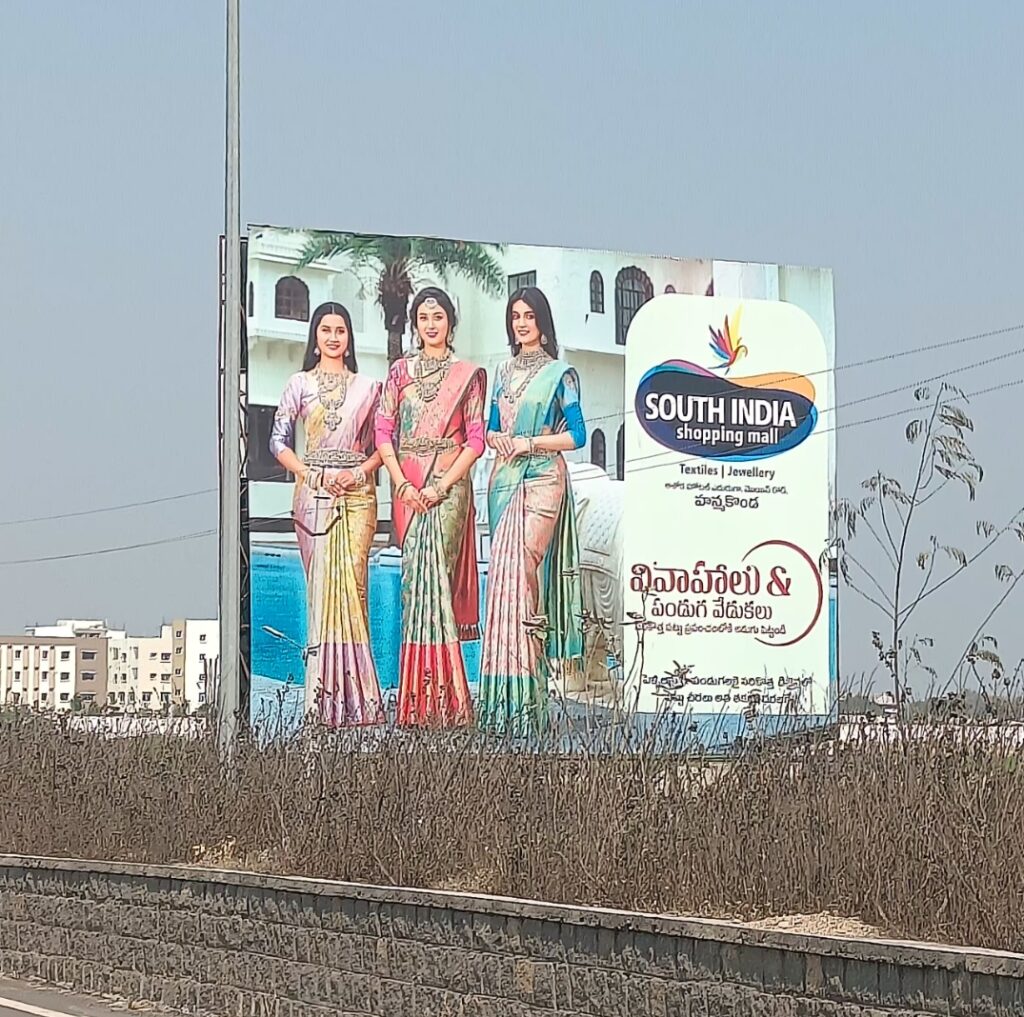
Moreover, the cost of living in Telangana appears to be higher compared to northern states, with commodities like food and clothing commanding premium prices. It is not uncommon to encounter villagers from less educated backgrounds seeking employment opportunities abroad, particularly in Gulf countries, to support their families financially. In such areas, the sight of paddy being transported in cars rather than traditional bullock carts underscores the evolving economic landscape of Telangana.
Interestingly, Telangana emerges as a hub for social service-based organizations, second only to Maharashtra among all the states visited. This proliferation of non-governmental welfare organizations underscores a societal shift towards a more compassionate ethos, indicative of a baseline level of affluence that enables individuals to extend assistance to the less fortunate.
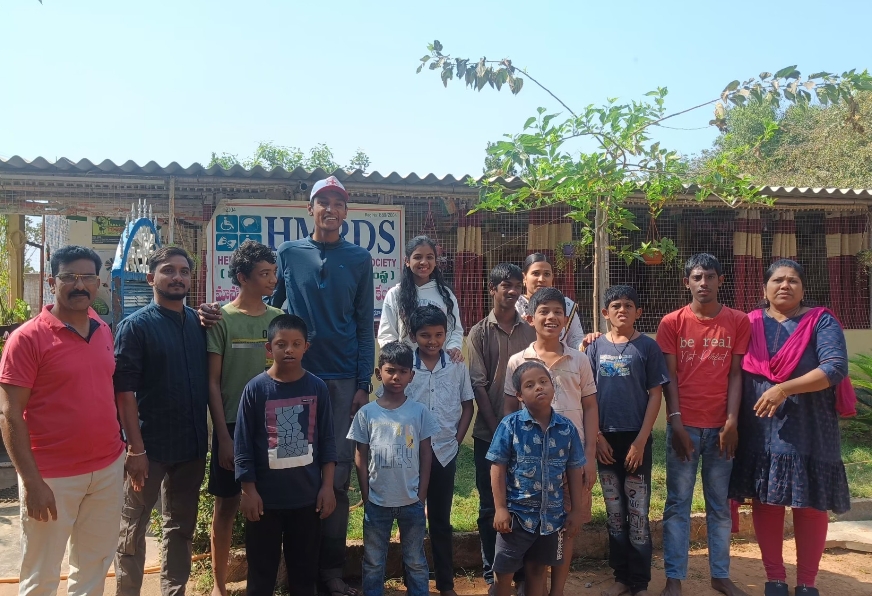
In summary, Telangana exhibits lower levels of poverty compared to its northern counterparts, coupled with a penchant for a more extravagant lifestyle. This socioeconomic landscape speaks to the state’s evolving economic trajectory and the changing aspirations of its residents.
Split between Andra Pradesh and Telangana
The split between Andhra Pradesh and Telangana was not merely a matter of cultural differences but also deeply rooted in resource allocation disparities. Historically, Andhra Pradesh, particularly its coastal and Rayalaseema regions, flourished under British rule, leveraging resources extracted from the Telangana region. Despite the river Godavari flowing through Telangana into Andhra Pradesh, water resources were disproportionately utilized to develop the latter at the expense of Telangana’s own growth.
While voices advocating for Telangana’s separation from Andhra Pradesh existed since India’s independence, it was K Chandrashekar Rao (KCR), the founding leader of the Telangana Rashtra Samithi (TRS), later renamed Bharat Rashtra Samithi (BRS), who spearheaded the movement in the early 2000s.
During the Andhra rule, disparities in development were evident, with Andhra Pradesh boasting 171 assembly seats compared to Telangana’s 117. Additionally, while Andhra Pradesh had one constituency for every three mandals, Telangana had a ratio of one constituency for every six mandals. This skewed representation favored Andhra Pradesh, with a higher number of MLAs elected from that region. Key government positions, including the home minister and other ministerial roles, were predominantly occupied by individuals from Andhra Pradesh, exacerbating the development gap between the two regions. Infrastructure projects such as national roads, hospitals, and dams were also disproportionately allocated to Andhra Pradesh, further disadvantaging Telangana across all facets of governance.
The stark contrast in development, coupled with linguistic differences, exacerbated tensions and ultimately culminated in the split between Telangana and Andhra Pradesh in 2014, during the Congress regime, with the support of Sonia Gandhi. This historic division marked a significant milestone in the political landscape of India, reflecting the complex interplay of historical, cultural, and socio-economic factors that shape regional dynamics.
Politics
Following the state’s formation in 2014, K Chandrashekar Rao (KCR) assumed the role of Chief Minister for two consecutive terms, succeeded by the current Congress government. While KCR’s tenure witnessed significant state development, it also faced challenges stemming from project implementation and welfare politics.
One of KCR’s early initiatives was the ambitious Kalleshwaram river project, aimed at addressing water scarcity by constructing barrages along the Godavari River and pumping water upstream. Despite its noble intentions, the project’s initial budget of 38,000 crores ballooned to 1.2 lakh crores, with an additional annual electricity investment of 10,000 crores, leading to sustainability concerns and project delays.
While KCR’s commitment to development was evident in initiatives like Mission Kakatiya, which revitalized irrigation systems and boosted agricultural incomes, his administration also faced criticism for welfare schemes like Raita Bandu (rupees 12000 was handed out to every farmer for every acre of land they possess per year indiscriminately) and Dalita Bandu (Rupees 100 crores was allotted per constituency for 118 constituencies), contributing to the state’s current debt of 5 lakh crores.
Moreover, KCR’s leadership style became increasingly autocratic, consolidating power and sidelining key ministers, including the deputy chief minister and finance ministers. This concentration of power extended to familial support, with KCR favoring his son KTR and nephew Harish Rao, leading to concerns over governance transparency and accountability.
The Kalleshwaram project, overseen directly by KCR, encountered operational challenges, including damage to key infrastructure and functional issues during adverse weather conditions, prompting investigations by the National Dam Safety Authority under the current Congress-led government.
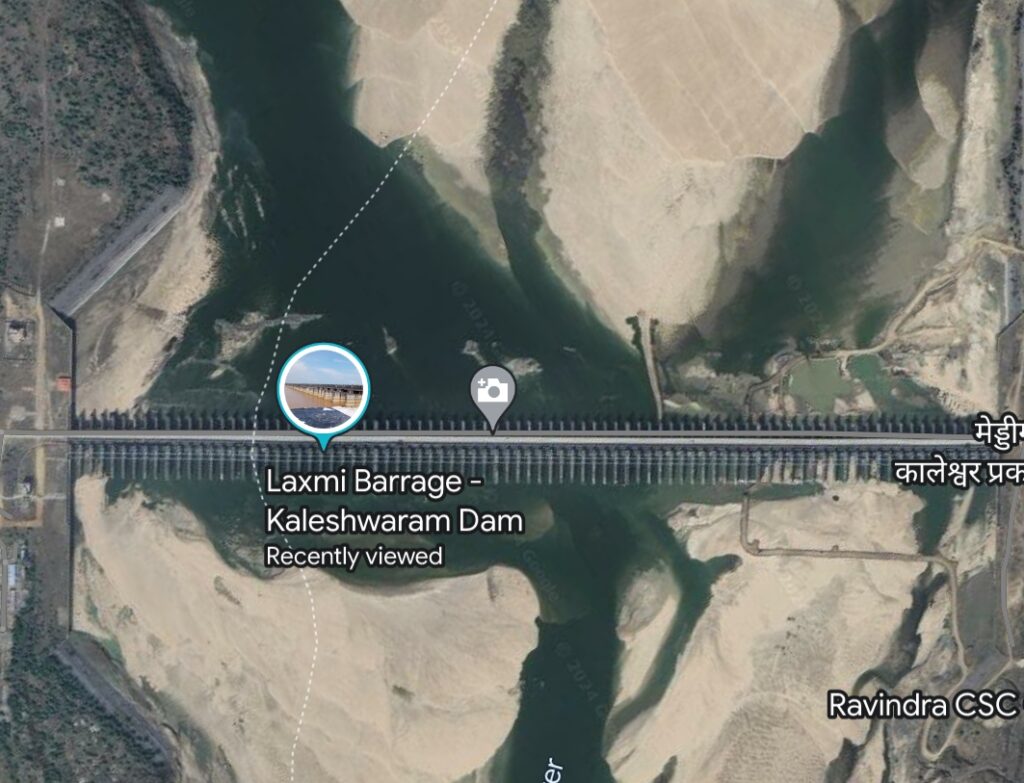
Opinions on KCR’s rule from 2014 to 2023 remain mixed, with recognition of development achievements tempered by concerns over autocracy and fiscal mismanagement. The transition to Congress governance has brought hopes for renewed leadership, although the implementation of new welfare policies further complicates the political landscape, reflecting the diverse opinions among Telangana’s populace.
Hindu Muslim coexistence
In Telangana, which was predominantly under Nizam rule, there is a significant Muslim population. Upon speaking with locals about the Hindu-Muslim dynamics in the state, I learned that there have been no major riots since the time of RT Ramarao’s regime in the 1980s. People consistently emphasize that they coexist peacefully, with religion seldom being a point of contention. However, recent political polarization has introduced some tensions. The only notable division between Hindus and Muslims in Telangana is the political presence of the AIMIM (All India Majlis-e-Ittehadul Muslimeen) party, which has consistently secured seats in Hyderabad since independence.
Psychology of people
Before arriving in Telangana, I had heard from people in neighboring states like Chhattisgarh that Telangana residents are predominantly self-centered, but upon my exploration, I found this notion to be both partially true and partially incorrect. While it’s true that people in Telangana exhibit a strong sense of self-interest, I also observed that they are generally more helpful compared to many other places I’ve visited in the country. However, there’s a striking resemblance to Gujarat in terms of the money-mindedness prevalent among the people. Often, the first question I encountered was, “What’s in it for you?” reflecting a mindset heavily focused on financial gains.
Additionally, I noticed that the language used by locals can be harsh, and initial interactions may come off as skeptical. However, once one overcomes this initial barrier, their warm and caring nature becomes evident. Instances where individuals initially seemed confrontational turned out to be genuine inquiries, with many eventually offering assistance.
Along the border regions, particularly those shared with Maharashtra, I encountered individuals more inclined towards monetary gain rather than displaying humanitarian traits. People here often spoke boastfully and behaved rudely, with instances like charging extra for chilled beverages. However, as I ventured deeper into the state, I experienced a noticeable shift in attitude. Telangana welcomed me with open arms, and everywhere I went, I was greeted with respect and offered hospitality, often in the form of food and water.
A notable cultural trait I observed among Telangana residents is their passion for movies, with a significant portion of the population being avid movie buffs. This, coupled with their penchant for taking selfies and indulging in spicy non-vegetarian cuisine, forms a highlight of their cultural identity. Despite their inclination towards leisurely activities, they also maintain strong religious beliefs and frequent temples regularly.
Another noteworthy aspect is the prominent role of women in various aspects of society, from running shops to being regarded as the “lamp of the house.” This reverence for women has been leveraged in welfare politics, exemplified by initiatives such as providing free bus tickets for women in government buses.
In conversations with Telangana natives, I learned that they are generally more laid-back and content compared to their counterparts in the more developed Andhra Pradesh, where people are perceived to be more educated, hardworking, and sometimes cunning.
Overall, my journey through Telangana offered a rejuvenating experience, immersing me in the rich cultural tapestry of South India. Despite encountering some challenges, my travels were relatively smooth, and I welcome constructive feedback on the observations shared in this article. For more insights into my experiences in each state I’ve visited, visit this page.
I am a 31 year young PhD graduate who has decided to travel the length and breadth of India on my cycle, to document the journey of meeting a vast array of people. In my journey, I intend to understand the characteristic features of the people of this nation and categorize them based on their demographics, age, profession, gender, traditions, and cultural differences.